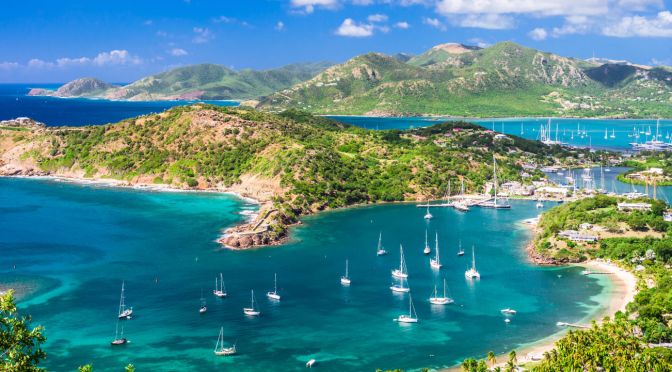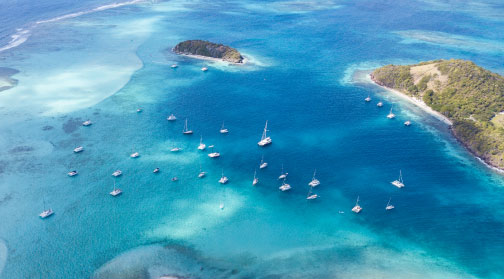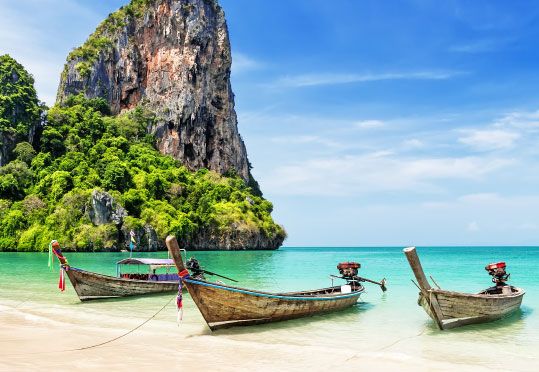How to charter a yacht
By our travel expert MikE
How to charter a yacht
By our travel expert MikE
One of our sailing experts talks through the tips and tricks of how to charter a yacht.


Types Of Yacht Charters
Cabin
If bareboat charter is like hiring a car, By the Cabin is like buying a bus ticket. Just a really really nice bus. With cabins, shower rooms, a well stocked bar and plenty of space to relax. Instead of renting an entire yacht, you’ll share the professionally crewed yacht with other guests, each paying for their own cabin or bed. You don’t have to worry about planning anything since they’re usually all-inclusive and have a set itinerary. Best part: as guests, it doesn’t matter if you’ve never sailed before as the pros are on hand to sail the yacht for you. Simply show up, relax, and get involved in as much or as little sailing as you like.Flotilla
Flotillas (or as some regions call them, Rallies) are when a charter company arranges a pre-determined itinerary that a small fleet of yachts will follow over a set time. The charter company arrange all of the passage and berthing logistics and are even on hand to help you dock each night. Like a bareboat charter, the whole yacht is yours to run and provision and some countries will require you to hold an ICC. Flotillas are a great, sociable stepping stone for newly qualified skippers to gain confidence before heading out on their own.Bareboat
This is yacht charter in its most basic form. Like car hire, all you’re doing is hiring the use of a yacht for a given amount of time. Everything else is up to you – food, berthing, fuel and most importantly skippering. To take on a bareboat charter, you have to be appropriately qualified. Most regions require you to hold an “International Certificate of Competence” (ICC for short). You can acquire an ICC either through a practical assessment or by writing to your national governing body with proof of holding a higher-ranking qualification (in the UK an RYA Day Skipper Certificate of Competence or any Yachtmaster practical qualification is acceptable) and they will issue you with your certificate.Skippered
If you don’t have an ICC or don’t want the stress of skippering your own yacht, skippered charters are a great solution. The skipper will take over all of the running and safety of the yacht, leaving you and your group to enjoy the holiday. Do bear in mind that the skipper is only on board to take care of the deck and they should be treated as a guest, so make sure the yacht you charter has enough cabins so the skipper has their own space, and that you cater for them when provisioning. In the Med, for a 40ft yacht, you can expect skippers to cost from €150/day. If you do want more assistance, hosts, cooks and deckhands are also available to hire by the day.Crewed
The crème de la crème of yacht charter, crewed is the ultimate in luxury. For those who’ve binge-watched Below Deck during the lockdown, you’ll have an idea! Crewed yachts have permanent crew who live onboard the yacht. It’s their job to make sure that you’re fully taken care of for sailing, catering and entertainment. Smaller crewed yachts start from around 50ft and right up through the mega-yacht territory. Before the charter, you’ll work with the yacht’s management team to detail your preferences for food and itinerary. As these charters are bespoke, pricing ranges widely but will usually have three components: 1. Charter Fee (the use of the yacht and crew) 2. Advance Provisioning Allowance (APA – a kitty of usually 30% of the charter fee to cover provisioning, berthing, fuel and other running costs) 3. Tip (a tip of between 10% – 20% of the charter fee made to the crew)

Choosing the Right Yacht
Selecting the yacht that’s right for you and your group is really important. So understanding what you want out of the charter and what’s important to you is fundamental. Like buying a house, make a list of non-negotiable points and be prepared to make some compromises.
Types of Yachts
Multihull
There has been a marked increase in the popularity of chartering multihulls over the past 10 years. But why? As the name suggests, multihulls have more than one hull. This means that not only is the deck space much larger than a monohull, but they also don’t heel (tip from side to side). They offer a large stable platform, perfect for a family sailing holiday. With so many perks, do come a number of compromises: charter costs are high, berthing is usually 50% more per night and sailing performance is compromised. So if your holiday is about the destination and requires short hops sailing between bays, multihulls may well be for you.Monohulls
If multihulls are about the destination, monohulls are about the journey! The preference of sailing purists, monohulls offer fantastic sailing performance, enabling you to travel further and faster than a multihull. Berthing is also easy and you can fit more monohulls into a marina or on a quayside. However, like multihulls, they come with some compromises: less deck space, deeper draught (they have keels so need deeper water to sail in) and they heel (tip-up) when sailing – for many heeling is part of the fun and performance of sailing, just remember to pack away breakfast before setting sail!Things to consider
- How deep is the draught of the yacht? Will it restrict where you want to go?
- Are en suite cabins important to you?
- Do you want a flybridge so the “sailing department” is separated from the entertaining space?
- What rigging/reefing system does the yacht have? Do you want a furling or stack pack main?
- If you plan to stay mostly on anchor, what tender is provided and how easy is it to launch?
- If sailing in the summer or in the tropics, do you want air conditioning?
- If sailing with professional crew, do you want them to have their own quarters?
- What is the deck made out of? Is it essential to have teak so it’s soft underfoot?


Choosing the Location
Over my 25-years of sailing, I’ve acquired a huge range of skills. One of those is the ability to look at a normal map and take an educated guess as to whether it’ll be a fun place to sail or not. Maybe it’s an art, not a skill. Who needs cruising guides?! There are 3 things you need to consider:- Shape and features of the land (both natural and manmade)
- Prevailing conditions (wind, tides, current and swell)
- Type of seabed


Looking at the land
Not only does land provide you with facilities ashore – like marinas, restaurants, bars and shops – but the natural geography creates bays to anchor in as well as shelter from unwanted weather. When anchoring most people prefer a sheltered bay away from wind and swell, so choosing a location with a variety of bays exposed to most directions is always going to be a winner. Naturally, sailing through islands offer the greatest flexibility.
Above we have three examples of what to look for when looking at land.


The Final Considerations
Running Costs
• Fuel
You’ve got a yacht now you need to keep it running. Diesel not only fuels the engine to help you leave port, or get to your destination if the wind dies, but if you have a generator, it’ll fuel that to run any 240v systems and air conditioning. Always ask what the average fuel usage for the yacht is per week and how much it costs to refill. Also, your tender will need fuel, just be sure how much it uses on an average charter.
• Berthing
Marina and quay berthing costs vary wildly. It’s good to check average seasonal prices and take into consideration that rates go up with yacht size as well as multihulls generally being 50% more expensive per meter than monohulls. Also be mindful that some marinas also charge extra for water, shore power electricity and even refuse collection.
Insurance
While I’m in no way qualified to recommend specific insurance products, I highly recommend researching policies that cover any damage waiver that you may have to pay your charter company.
Other hidden costs
Before agreeing to a charter, make sure you understand what other charges you could be liable for (often paid in cash on arrival). These include cruising/tourist tax, damage deposits, post-charter deep clean. As long as you know what you’re in for before you arrive, you won’t have any surprises.
Feeling inspired?
Simply fill out the form below and one of our seasoned yacht charter specialists will put together the perfect sailing holiday for you.Discover our travel destinations
Antigua
Witness the most beautiful coves with pristine beaches and turquoise water allowing you to explore the exotic marine life and natural coral.
Guadeloupe
With volcanic scenery and French Creole food, Guadeloupe is teeming with fresh fish, locally-grown spices, and a beautiful landscape.
Thailand
Spoil yourself with a once-in-a-lifetime experience by sailing in a destination unlike any other.






